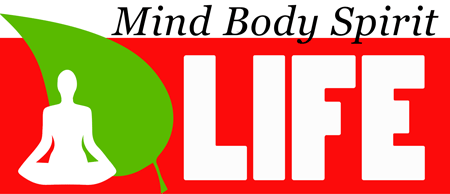Balance: The mind-body-soul connection

Balance is a lifetime achievement, a process of learning to navigate in the world that begins in infancy and continues into old age – Jean Massion
Happiness is not a matter of intensity but of balance, order, rhythm and harmony. Thomas Merton
Mind, body and soul are like a musical ensemble. Each must be well tuned, finely nourished, diligently practiced and lovingly maintained in order to reach full potential. – Center of Holistic Wellness in Sedro Woolley, WA
Manifesting is a lot like making a cake. The things needed are supplied by you, the mixing is done by your mind and the baking is done in the oven of the universe.
― Stephen Richards
Aristotle’s doctrine of the “golden mean,” the ancient Chinese “yin and yang” doctrine, and the principles underlying Hindu philosophy all point to one key principle – the value of maintaining equilibrium between opposing forces. The ancients saw this equilibrium or proper balance as the way to justice, morality, acquisition of virtues, and health of body and soul.
Today, the “balance” principle continues to be studied with interest by people in all walks of life – from health and fitness experts, dancers, athletes, scientists, philosophers, psychologists to the general public. The interest of many is driven by the idea that a balance of the mind, body, and soul are necessary to live a happy and fulfilled life; the three are seen as interconnected so much so that a weakness or imbalance in one is believed to cripple the others.
For example, science has uncovered that severe emotional stress can cause high blood pressure and other illness in an otherwise healthy body. By the same token, physical illness or injury has been found to cause depression in an otherwise healthy mind. The soul, the co-called intangible core of our being, is largely viewed in terms of our perceptions and relationship to the world around us. When in balance, our soul is believed to be in harmony and peace, often linked to religious practices, secular forms of meditation, yoga principles, and spiritualism in general.
Turning to the physical dimension, body equilibrium or balance is the ability to maintain the center of gravity of the body within the base of support. Note: the lower the center of gravity and the larger the base of support, the easier for the body to balance and vice versa.
Keeping balance requires integration of inputs from multiple senses: the vestibular system (balance organs in the inner ear), motor system (reflexes of the muscles tendons and joints), and visual system (sends signals from the eyes to the brain about the position of the body as it happens). The senses detect the change of the body position with respect to the base (whether the body moves or the base moves).
Those who have watched gymnastic gyrations in a ballroom dance competition will note that dancers possess supra normal balance. They are able to balance on precariously small base of support such as the ball of one foot (the body would normally be less stable in this position). So how do they do it?
Dancers develop heightened sense of body awareness and focus, through practice and exercises, to maintain balanced states through precarious positions. Body awareness involves having an accurate sense of where one is moving in space and what parts of the body are moving.
Exercising of core muscles responsible for much of the balance (abdominals, glutes, back and hip) also help. The exercises also offer the benefits of muscular elasticity, control, strength and stamina.
Another major element for keeping and maintaining balance is alignment, which is when the ankles, pelvis, thorax and head are lined up vertically so that from a side view they form a straight line. When there is optimum alignment of the human skeletal structure, the body is well balanced. Proper alignment for a ballroom dancer includes:
• Lifted chin, elongated neck, eyes off the floor
• Shoulder pressed naturally down
• Rib cage closed, as if there was a safety pin holding it together
• Stomach muscles engaged
• Hips held even and level
When the body is out of alignment, balance is compromised and undue stress is placed on muscles, ligaments and joints to try to keep the body in balance; the result is that the body tires easily, making it difficult to maintain balance.
Incidentally, body alignment is also important for improving the functioning of the nervous system which in turn improves physical and mental health. Furthermore, keeping the spine, as well as the rest of the skeletal system in proper alignment enables the body’s healing mechanisms to function at its full potential. This may mean that one experiences sickness less, and when one does, the body may heal itself quicker.
As dancers hone their physical balance skills, confidence level naturally rises and so also their ability to increasingly let go the bindings of controlled action (muscle tension that constricts balance). The result can be burst of freer artistic expression and successive completion of increasingly challenging feats.
Moving on to the largely mental dimension of balance, imagine this scenario in dance: you are on the floor and a major competition is about to begin. How do you feel — panic-stricken or with a quiet frame of mind? You may remark that your state of mind is contingent on how you feel about yourself at the time as a dancer – i.e., your preparedness, how you feel about your overall appearance vis a vis the other competitors, whether or not the other dancers are seemingly better dancers than you, and so on…
What in essence you would be admitting is that your mind is racing. Unproductive thoughts based on fear, illusion, and happen-chance — thoughts that are habitual, scattered and unnecessary, i.e. debris, has invaded your mental space. When your mind is quiet, on the other hand, it is able to detect the subtle communication of the body, mind, and soul. Productive, purposeful thoughts and quiet determination are able to enter your mental space –the right balance that will work for you rather than against you. When you love and enjoy the moment, you counterbalance any fear that tries to creep in.Through discipline, focus, and determination, it is possible to learn how to quiet the mind.
But first, we need to come to terms with our tendency for negativity. In facing the truth of our negativity, we can begin the honest work of removing it. As we learn to release unproductive thoughts and fear that we live by, our mind becomes a clearer and more finely tuned filter. Another way of putting it: We are balanced when we are able to fully digest everything we take in, extracting what is nourishing, and eliminating whatever doesn’t serve us. This principle applies to our foods, our relationship, our jobs, and all our life experiences. Such a balanced mind would have a positive influence on our state of being, bringing us closer to who we really are.
What specific steps can we take to quiet the mind and restore balance? Meditation is one way. In the silence of awareness, the mind lets go of old patterns of thinking and feeling and learns to heal itself. Engaging in daily exercise is another way; research has uncovered that physical activity sparks biological changes which include reversal of detrimental effects of stress and lifting of depression.
Other steps include: taking time for restful sleep, releasing emotional toxins, cultivating loving relationships and enjoying a good belly-laugh as often as possible.
Inadequate sleep can disrupt the body’s innate balance; when we are well rested, we can approach stressful situations more calmly. Emotional toxicity is here defined as unprocessed anger, hurt or disappointment – residue from the past that causes pain and weighs us down. Once we have identified what we want to release, we can choose to write about it to unleash the pain. Good social support network can also help to release emotional pain and to fill the newly created space with love and self-nurturing behavior. And laughter has been found to reduce the production of stress hormones.
Gaining emotional intelligence is yet another way to restore mental balance. Emotional intelligence is here defined as the ability to monitor one’s own and other people’s emotions, to discriminate between different emotions, and to use the knowledge to be balanced in our thinking and behavior. Through self-surveillance of our personality (via well researched self-evaluation questionnaires and/or personality tests), we can identify our weaknesses and our strengths. Why”? Because we can’t change what we don’t know.
Once we become aware of what we are really like we can not only use our strengths to our advantage but also our weaknesses. How? We can catch ourselves doing something that is not to our best interest and do something about it. Here’s a simple demonstration. You have uncovered on your own that you have a tendency to be insistent and defensive in arguments in which it later turns out that you were wrong. This discovery can be helpful when you catch yourself in heated arguments. You can choose to be more open minded and accepting of other viewpoints and/or be more careful habitually to ascertain in advance the validity of points you choose to defend.
The third dimension of a state of balance is the soul. We have an amazing potential to transform ourselves through our thoughts, perceptions and choices. Living consciously, learning from our mistakes (as opposed to unconsciously floating through life’s hard knocks), and choosing to do better as a result brings us closer to our “soul wisdom” — intuition gained from life situations. Intuition, in a sense, is inspiration gained by letting our thoughts filter through the “energy” of the universe. Establishing a healthy dialogue with our thoughts and our inner spirit or soul can help us shift from imbalance to balance.
A dance analogy can perhaps illustrate the soul dimension of balance. “Dance is the hidden language of the soul” noted world renowned American dancer and choreographer Martha Graham. Analysis: Dance is possibly one of the truest (honest depiction of emotion) and most expressive (illustrating emotions and ideas across a wide spectrum, e.g., pathos, beauty, compassion, love) art forms. When in balance, our soul similarly reflects truths (i.e., wisdom) from life experiences: empathy, intuition, peace, foresight, trust.
So there you have it, we have within us the potential to be in optimal balance in every possible dimension. We can even tap into the eternal energy of the universe in order to become the best we can be. We have more power to change for the better than we realize! We can live life with love not fear.
Click here to subscribe to Lekha’s column, it’s free.



